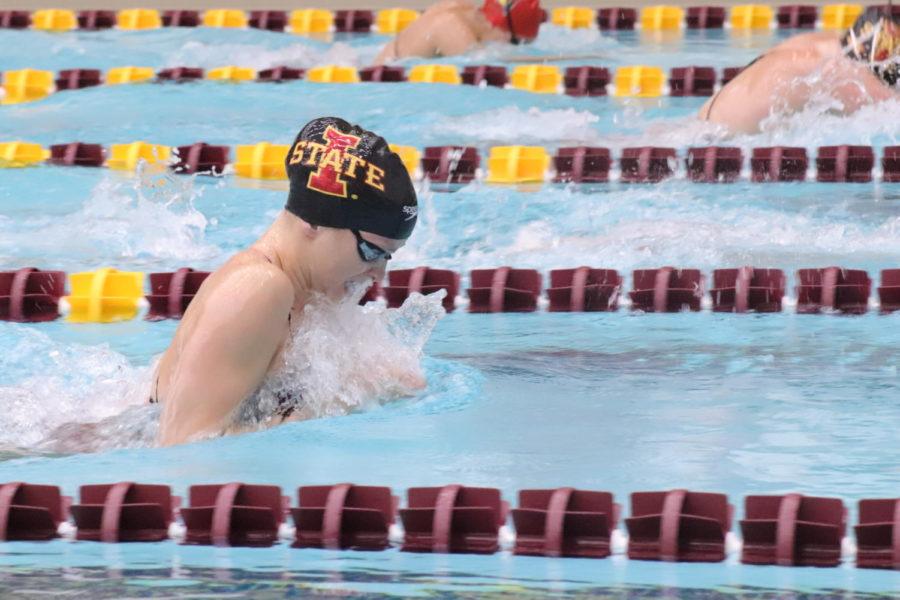Swimming team reflects on impact of Title IX
November 13, 2019
There are over 19,000 college sports teams in the NCAA, according to ncaa.org. What some people may find surprising is that of those 19,745 teams, roughly 54 percent of them are women’s teams, and the remaining 46 percent are men’s.
So how is it possible that there are more women’s collegiate sports teams than men’s when the two sports generating the most money are football and men’s basketball?
The answer comes in the form of Title IX, a law passed by Congress in 1972.
“[Title IX] is supposed to be we all have equal opportunities for both men and women,” said Duane Sorenson, the Cyclones’ swimming and diving coach. “It’s predominantly thought of more of women’s rights rather than men’s rights. It’s really helped women’s athletics at both the high school and collegiate level.”
Swimming and diving is one sport that benefits from Title IX. There are 10 women’s sports teams at Iowa State and six men’s teams. Out of those 16 teams here, football and men’s basketball are the only two teams that garner enough money to pay for their expenses and more.
Title IX was created to benefit both men and women, but sometimes it may seem like it benefits the women more.
“When I was in high school, we didn’t have girl’s sports,” Sorenson said. “When I graduated from high school, then high school sports came into being because that’s when Title IX came around.”
Sorenson said when Title IX was put in place, there was lots of eager participation from mothers to have their daughters play on high school teams and compete for their school.
“Now I think a lot of our high school age and even college age [students] kind of take it for granted,” Sorenson said.
Title IX doesn’t compare how many sports teams there are, but rather how many opportunities there are for each gender. At Iowa State, there are 283 male student athletes, compared to 249 female student athletes, according to Equity in Athletics Data Analysis. That’s a pretty even number when team comparison is taken into account. When football is still as dominant, as large as it is and with over 100 participants on the team, it allows for smaller women’s teams and programs to be around.
“If there’s 200 opportunities for men, there’s got to be 200 opportunities for women,” Sorenson said. “So we dropped baseball and men’s swimming because we had too many men’s opportunities.”
Title IX can also create more confidence in women because of the opportunities it brings about.
“Women’s voter rates spiked when Title IX was passed,” said senior swimmer Anna Andersen. “It’s interesting to see how Title IX has affected women’s confidence in general.”
Title IX didn’t just affect women on a national scale, but it also affected them on a smaller scale with female student athletes’ confidence.
“I have never been on this campus and felt like me being a female athlete wasn’t important,” said junior swimmer Lehr Thorson. “If you were to look back, however, many years before Title IX existed, that kind of attitude would have never existed, even in the beginning years. There still would have been a mentality of female athletes are like, ‘Do I really belong at this level? Am I welcomed here?’ I never felt that negativity from an aspect of being a female athlete at Iowa State.”
Title IX also plays right into the swimming and diving team’s mentality this year.
“Our team word is ‘empower,’” Andersen said. “It’s just about strong women empowering other women, and I think Title IX gives girls that opportunity.”
Andersen and Thorson said they are big fans of Title IX and that it gives women a great opportunity.
“It gives us an opportunity to do what we’re doing,” Thorson said. “We have the same opportunities as everyone else.”
















